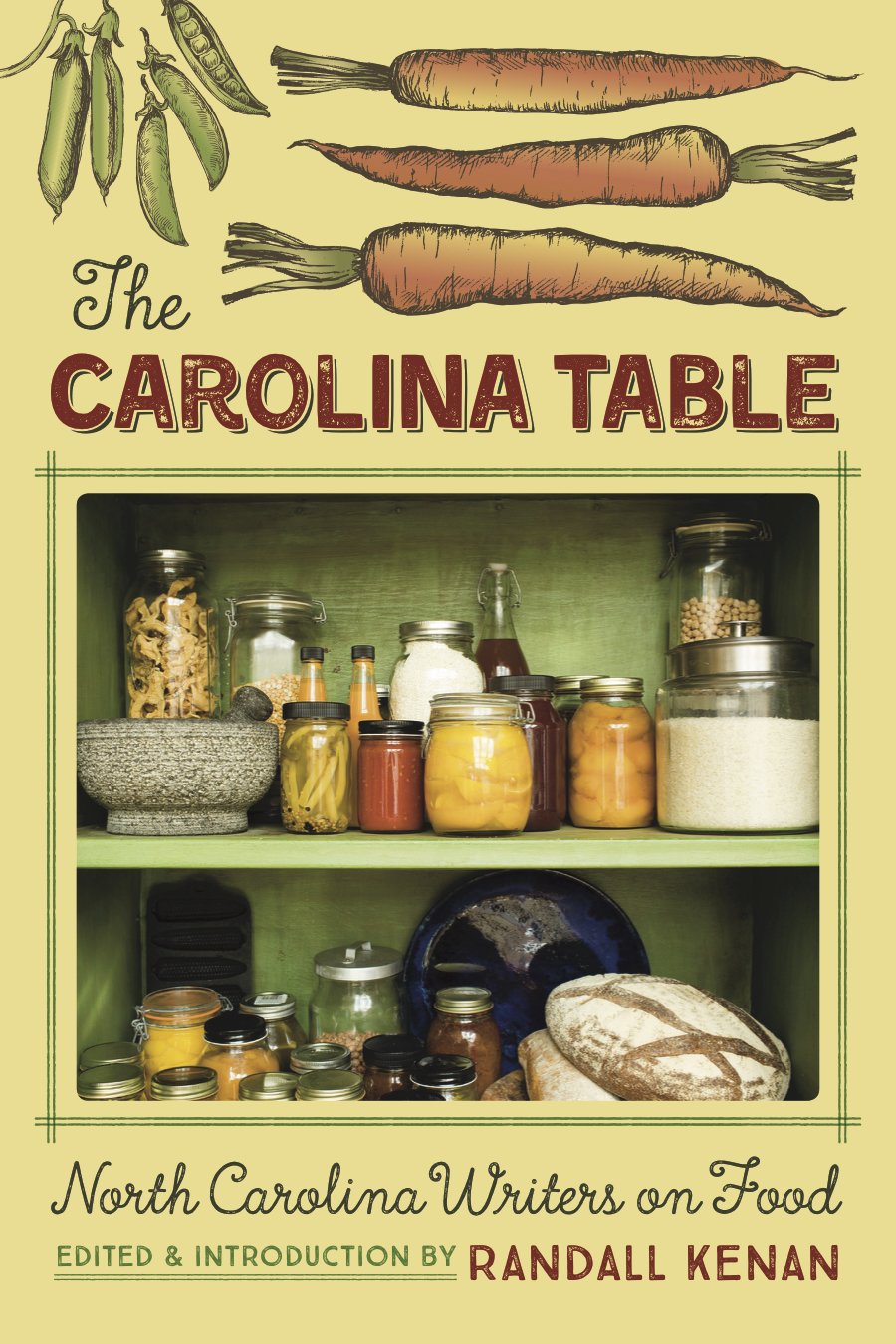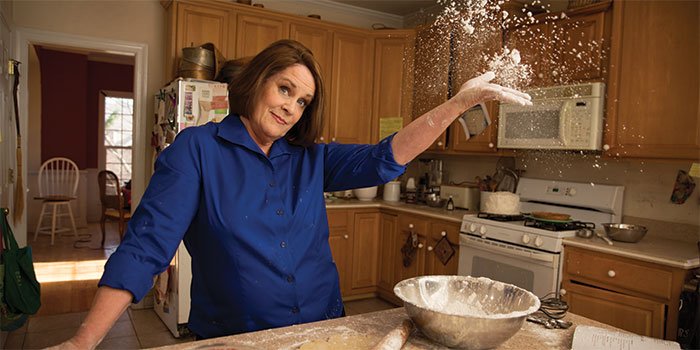Important Links:
Listen to Nancie McDermott read her story, “The Family Reunion” from the anthology, The Carolina Table—North Carolina Writers on Food:
Visit Nancie McDermott’s website:
Our State Magazine: Easy as Pie—Nancie McDermott — a North Carolina author who wrote the book(s) on Southern cakes and pies — weighs in on the benefits of making a mess in the kitchen
Purchase The Carolina Table (Eno Publishers):
Music for this episode is entitled “Midnight Square Dance,” by the group, Heartland Nights; available on Soundstripe:
Season Two, Episode 12 Show Notes
Making a Wonderful Mess With Cookbook Author Nancie McDermott
Photo by Jimmy Williams
Family Reunions, Messy Kitchens & Food Memories
The Lloyd Family Reunion was and still is a summertime ritual for chef and cookbook author, Nancie McDermott. Generations have gathered for over a century in rural Orange County for an afternoon of feasting and visiting. Nancie savors the dishes, the shared experience, and the meaningful connection of family and food.
Bio—
Nancie McDermott has published fourteen cookbooks, most of which are based on the cuisines of Asia and of the American South. Among her books are the award-winning Southern Cakes: Sweet and Irresistible Recipes for Everyday Celebrations; Real Thai: The Best of Thailand's Regional Cooking; and Fruit: A Savor the South Cookbook. A North Carolina native, Nancie grew up watching her maternal grandmother cook and bake in her dairy farm kitchen. It sold her on the idea of the kitchen being a fun, fascinating lab for creating and playing, a place made for celebration and connection. Her interest in Asian food was inspired by the three years she spent as a Peace Corps volunteer in Thailand. She has published articles in Bon Appetit, Food & Wine, Fine Cooking, and other publications. Her cover story for Southern Living was nominated for a much-coveted James Beard award. Her television appearances include playing the role of cake historian on Alton Brown’s “Good Eats,” on the Food Network; leading Thai market tours on the Discovery Channel, regular appearances on "Hallmark Home & Family", and video cooking classes for Craftsy.com. Her essay, “The Family Reunion” is included in Eno Publishers’s anthology, The Carolina Table: North Carolina Writers on Food. Nancie lives with her family in Chapel Hill in a house with a productive and sometimes-messy kitchen, and a garden where okra, basil, Armenian cucumbers and lemongrass thrive.
The Recipe
Miss Nannie’s Fresh Coconut Cake
This is the cake that made my grandmother famous all over Orange and Durham counties in the Piedmont region of North Carolina during my childhood. Fresh coconut is ideal here, and worth every bit of the effort it requires. But use sweetened shredded coconut from the baking aisle, or frozen grated coconut from an Asian market, if that helps you get the cake made. My grandmother usually baked this cake in two 9-inch layers and then split them horizontally to make four thin layers. It is also lovely baked in three 8-inch layers.
For the Cake:
1 cup (2 sticks) butter, softened
2 cups sugar
4 eggs
3 cups all-purpose flour
2 teaspoons baking powder
1/2 teaspoon salt
2 teaspoons vanilla extract
1 cup milk
For the Icing:
3 cups sugar
3 rounded tablespoons flour or cornstarch
1 cup fresh coconut juice, or water, or a combination of the two
About 3 cups freshly grated coconut or sweetened shredded coconut
To make the cake, heat the oven to 350 F. Grease and flour two 9-inch round cake pans and set aside.
In a large bowl, beat the softened butter with a mixer at medium speed until creamy. Add the sugar and continue beating, stopping to scrape down the bowl, until the mixture is fluffy and fairly smooth. Add the eggs, one by one, beating each time, until you have a thick, smooth batter.
In a medium bowl, combine the flour, baking powder, and salt, and use a fork to stir and mix them together well.
Add about one third of the flour mixture to the batter and beat with a mixer at low speed just until the flour disappears. Stir the vanilla into the milk, and add about half the milk to the batter, beating just until the batter is smooth. Continue beating as you add another third of the flour mixture to the batter, followed by the rest of the milk, and then the remaining flour mixture, beating each time just until the batter is very thick and smooth.
Quickly scrape the batter into the prepared cake pans, dividing it evenly, and place them in the oven. Bake at 350 F for 25 to 30 minutes, until the cakes are golden, spring back lightly when touched in the center, and begin to pull away from the sides of the pan. Remove from the oven and cool the cakes in the pans on wire racks or folded kitchen towels for 10 minutes. Then turn out the cakes onto wire racks or plates. Turn the layers top side up to cool completely. Just before icing the cake, carefully slice each layer in half, cutting horizontally, to make 4 thin layers.
To make the icing, combine the sugar and flour in a heavy medium saucepan, and stir with a fork to mix them together well. Stir in the coconut milk, and place over medium heat. Cook, stirring often, until the mixture comes to a gentle boil. Continue to stir often as the sugar dissolves and the mixture turns syrupy. Cook for about 4 minutes at a gentle boil, and then stir in about 2 1/4 cups of the freshly grated coconut. Cook about 2 minutes more, stirring gently as the icing thickens. Remove from the heat and let cool to room temperature.
To ice the cake, place one half-layer top side down on a cake stand or serving plate and spread about one fourth of the icing over the cake. Repeat with the remaining three half-layers, four half-layer top side up. Spread the icing to the edges and let it cascade gently down the sides. Sprinkle the remaining 3/4 cup of coconut over the top of the cake, and pat gently to help it adhere to the icing.
The cake will be visible through the translucent icing, looking as though it were in a little ice palace. Let the cake stand at room temperature for two to three hours, or as long as overnight. Cover the cake well and store it in the refrigerator if you will not be serving it within a few hours. Simply let the cake return to room temperature for one or two hours, to release the strong chill. This cake mellows and tastes even better the second day.
(This recipe comes from Southern Cakes: Sweet and Easy Recipes for Everyday Celebrations, by Nancie McDermott. Chronicle Books, 2007. Reprinted here with permission of the author.)


